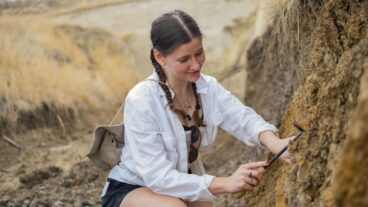Israel’s first “smart” hiking trail, under construction between Tiberias and Beit Sheʽarim National Park in the Lower Galilee, will bring hikers back in history to the Second Temple period more than 2,000 years ago, when the Great Sanhedrin — the supreme Jewish authority of sages – was active in this region.
Hikers will have access to an innovative augmented reality-based smartphone application that will virtually reconstruct heritage sites, integrate virtual guides for children along the route and bring to life prominent scholars such as the four rabbis mentioned in the Passover Haggadah.

Due to be completed in spring 2018, the trail marks three important “70s.” It will be inaugurated for the State of Israel’s 70th anniversary, will stretch 70 kilometers, and will pass sites associated with the 70 members of the Great Sanhedrin.
These scholars recorded the Mishnah and Talmud during their 290 years in the Galilee following the Bar Kokhba revolt against Rome in 135 CE. The Great Sanhedrin originally sat on Jerusalem’s Temple Mount.

“People such Rabbi Akiva and Rabbi Yehuda HaNasi, the members of the Sanhedrin who were active here 2,000 years ago, determined to a great extent much of how our lives are run today. It is according to these religious laws that we marry or conduct funeral ceremonies, and even administer Jewish law,” said Yair Amitzur, the Israel Antiquities Authority’s antiquities inspector for the Eastern Galilee, and one of the initiators of the idea.
“The establishment of the trail and walking on it will connect those who live here today with the atmosphere and frame of mind of that period,” Amitzur continued. “In walking along the Galilee trails while using the application that will be developed specifically for this project, the trail will afford visitors a learning experience about the Mishnah and Talmud period and connect them to the world of the sages who shaped Judaism in the religious houses of learning.”

The family-friendly Sanhedrin Trail is to be divided into five segments that can be covered during the course of five days of walking, and also will include circular routes.
Work on the first section of the trail began this March with the help of volunteers and thousands of high school students from the National Religious school system of the Ministry of Education.
“We learn a lot in the classroom and at school, but in practice the studies only really sink in when you feel it, when you walk it,” said Tal Dothan, one of the students participating in the Sanhedrin Trail work.

In preparation for the Tiberias section of the Sanhedrin Trail, the teens have been taking part in archaeological excavations along the cardo, the main street of the ancient Roman city of Tiberias on the Sea of Galilee.
A visitors’ center will be built here to give the public an opportunity to better understand the project and participate in the excavations while getting to know the city’s ancient heritage.
Israel Hasson, director of the Israel Antiquities Authority, said he will work with regional councils through which the trail passes to get local residents involved in building “a spectacular and enjoyable interactive trail for tens of thousands of hikers that will connect the hikers to their past.”
The Sanhedrin Trail was initiated by the Israel Antiquities Authority in cooperation with the National Religious Education Administration of the Ministry of Education, and is financed by the Landmarks Project of the Ministry of Jerusalem and Heritage. Regional councils and towns along the route, as well as environmental organizations, are partnering in the effort as well.













